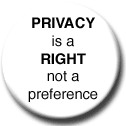4 March 1789: Government Under The U.S. Consitution Begins
00:01
The Constitution of The United States of America.
Image source: Wikipedia
Image source: Wikipedia
First, a few personal thoughts.
So what happened to the values embodied by these eloquent words in the Preamble of the U.S. Constitution?
We the People of the United States, in Order to form a more perfect Union, establish Justice, insure domestic Tranquility, provide for the common defence, promote the general Welfare, and secure the Blessings of Liberty to ourselves and our Posterity, do ordain and establish this Constitution for the United States of America.These days, amidst so much inherent poltical turmoil, unscrupulous representatives in public office, and inept administrative oversight of our country, each and every citizen should really think about the ideals set forth in our consitutonal framework by the founding fathers.
Via The History Channel Online.
The first session of the U.S. Congress is held in New York City as the U.S. Constitution takes effect. However, of the 22 senators and 59 representatives called to represent the 11 states who had ratified the document, only nine senators and 13 representatives showed up to begin negotiations for its amendment.Reacquaint yourself with the framework for our society.
In 1786, defects in the Articles of Confederation became apparent, such as the lack of central authority over foreign and domestic commerce and the inability of Congress to levy taxes, leading Congress to endorse a plan to draft a new constitution. On September 17, 1787, at the conclusion of the Constitutional Convention in Philadelphia, the new U.S. Constitution, creating a strong federal government with an intricate system of checks and balances, was signed by 38 of 41 delegates to the convention.
As dictated by Article VII, the document would not become binding until it was ratified by nine of the 13 states. The Constitution was thus sent to the state legislatures, and beginning on December 7, five states--Delaware, Pennsylvania, New Jersey, Georgia, and Connecticut--ratified it in quick succession. However, other states, especially Massachusetts, opposed the document for its failure to reserve powers not delegated by the Constitution to the states and its lack of constitutional protection for such basic political rights as freedom of speech, religion, and the press, and the right to bear arms.
In February 1788, a compromise was reached in which Massachusetts and other states agreed to ratify the document with the assurance that amendments would immediately be adopted. The Constitution was thus narrowly ratified in Massachusetts, followed by Maryland and South Carolina. On June 21, 1788, New Hampshire became the ninth state to ratify the document, making it binding, and government under the U.S. Constitution was scheduled to begin on March 4, 1789.
On September 25, 1789, after several months of debate, the first Congress of the United States adopted 12 amendments to the U.S. Constitution--the Bill of Rights--and sent them to the states for ratification. This action led to the eventual ratification of the Constitution by the last of the 13 original colonies: North Carolina and Rhode Island.
If you don't know what you have, you'll never know when its taken away from you.
Link here.
If you want to searchg for other "00:01" entries, just search for "00:01" in the blue toolbar search frame at the top of the blog.
In my recurring "00:01" series -- a pursuit to provide a memory of important things we should not forget in technology -- I give you todays entry.









0 Comments:
Post a Comment
<< Home